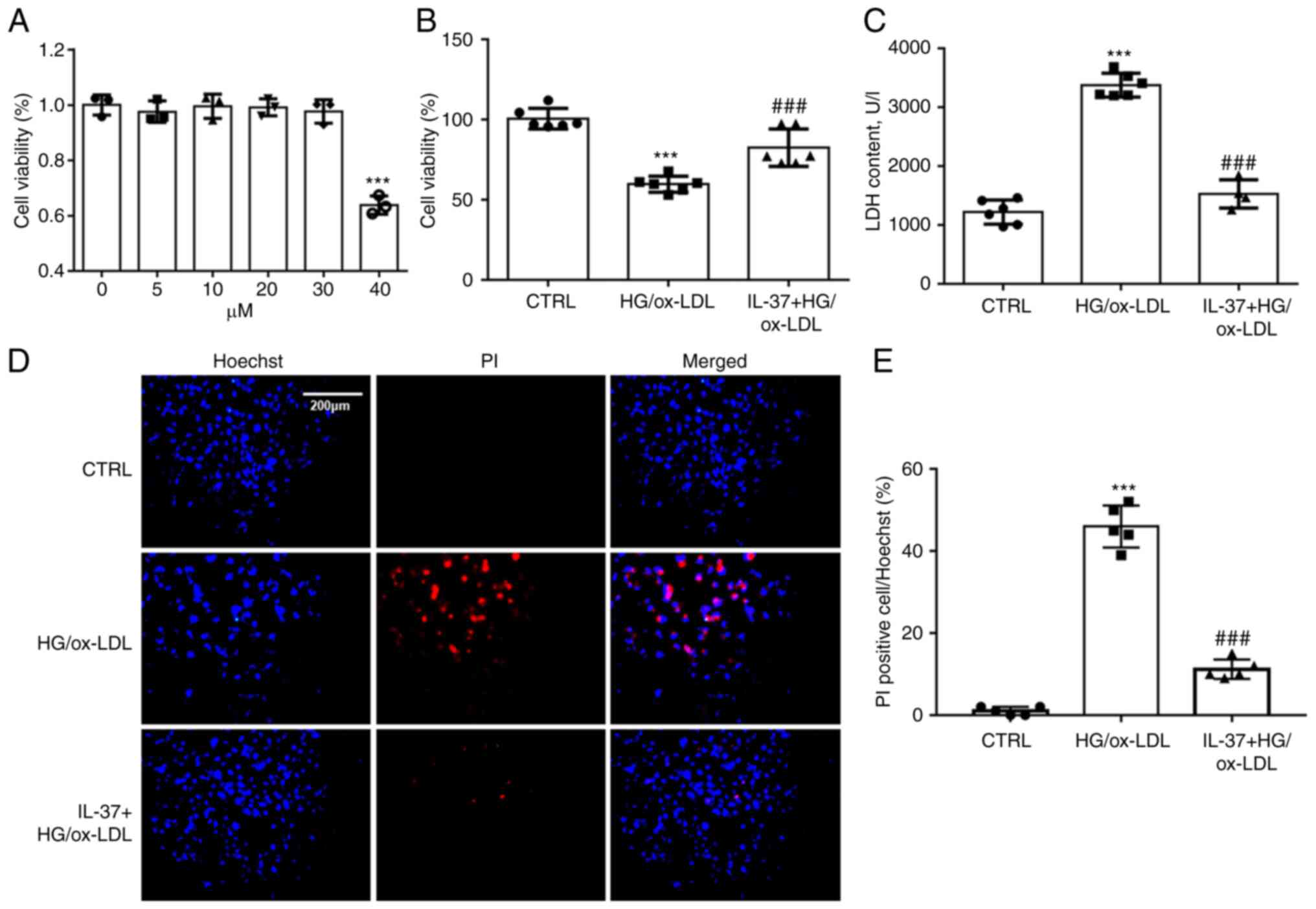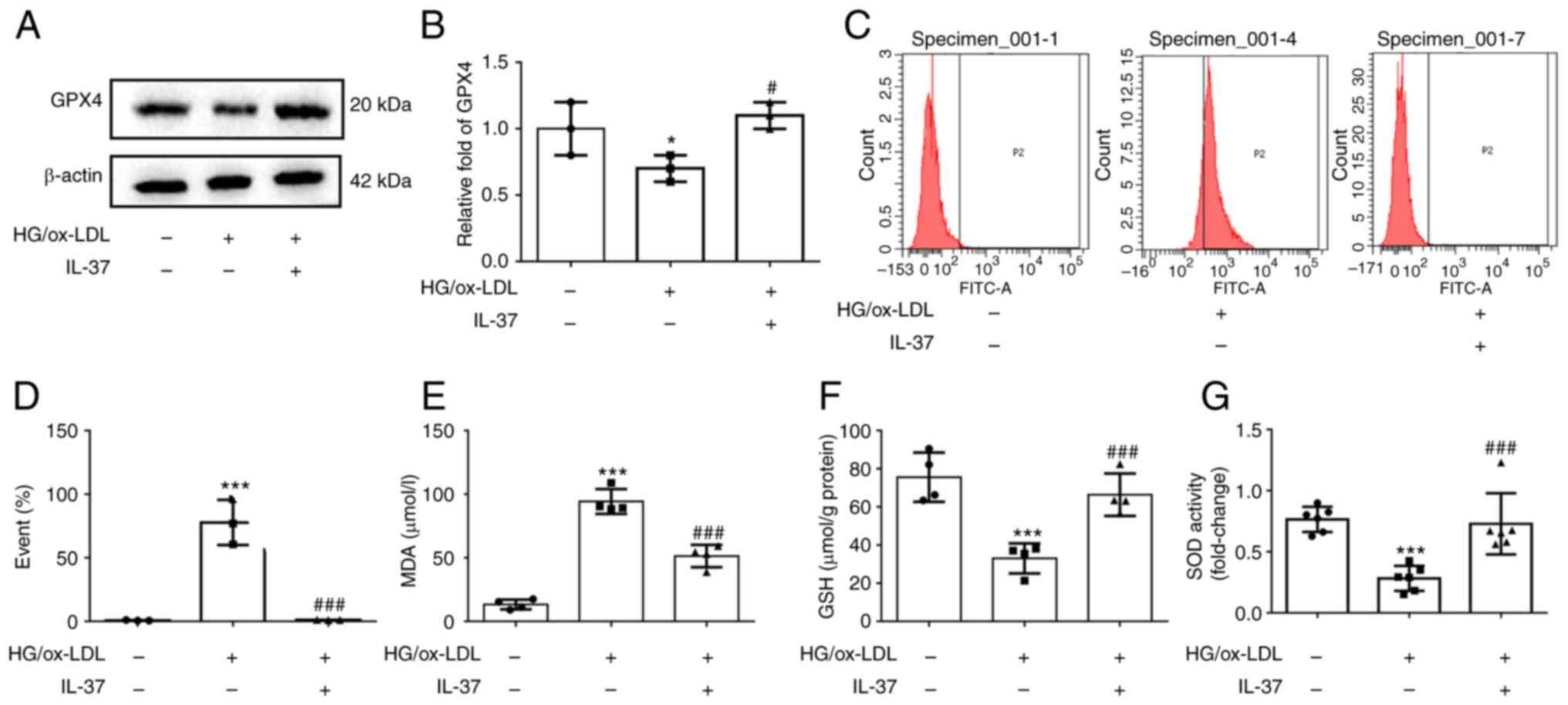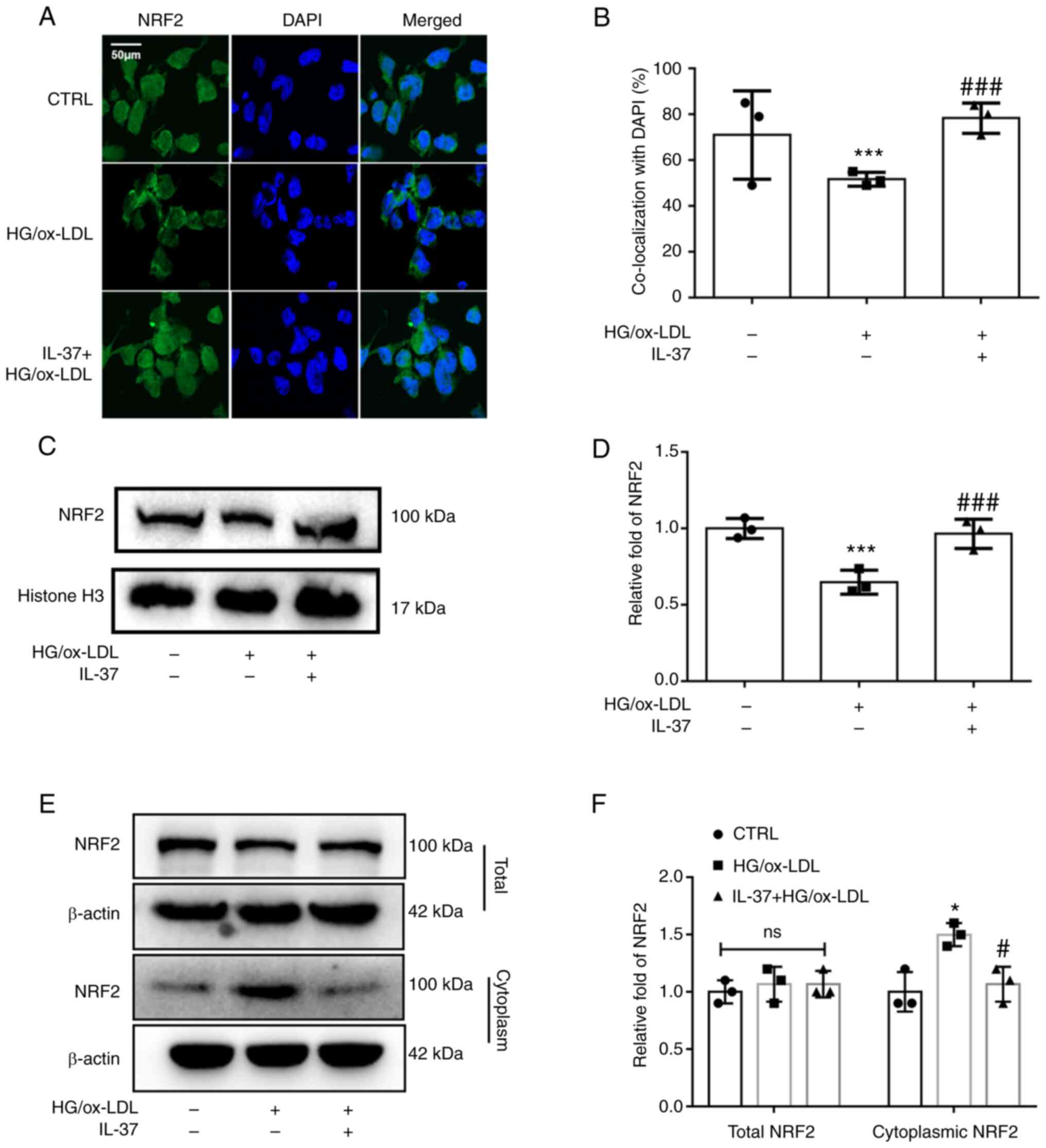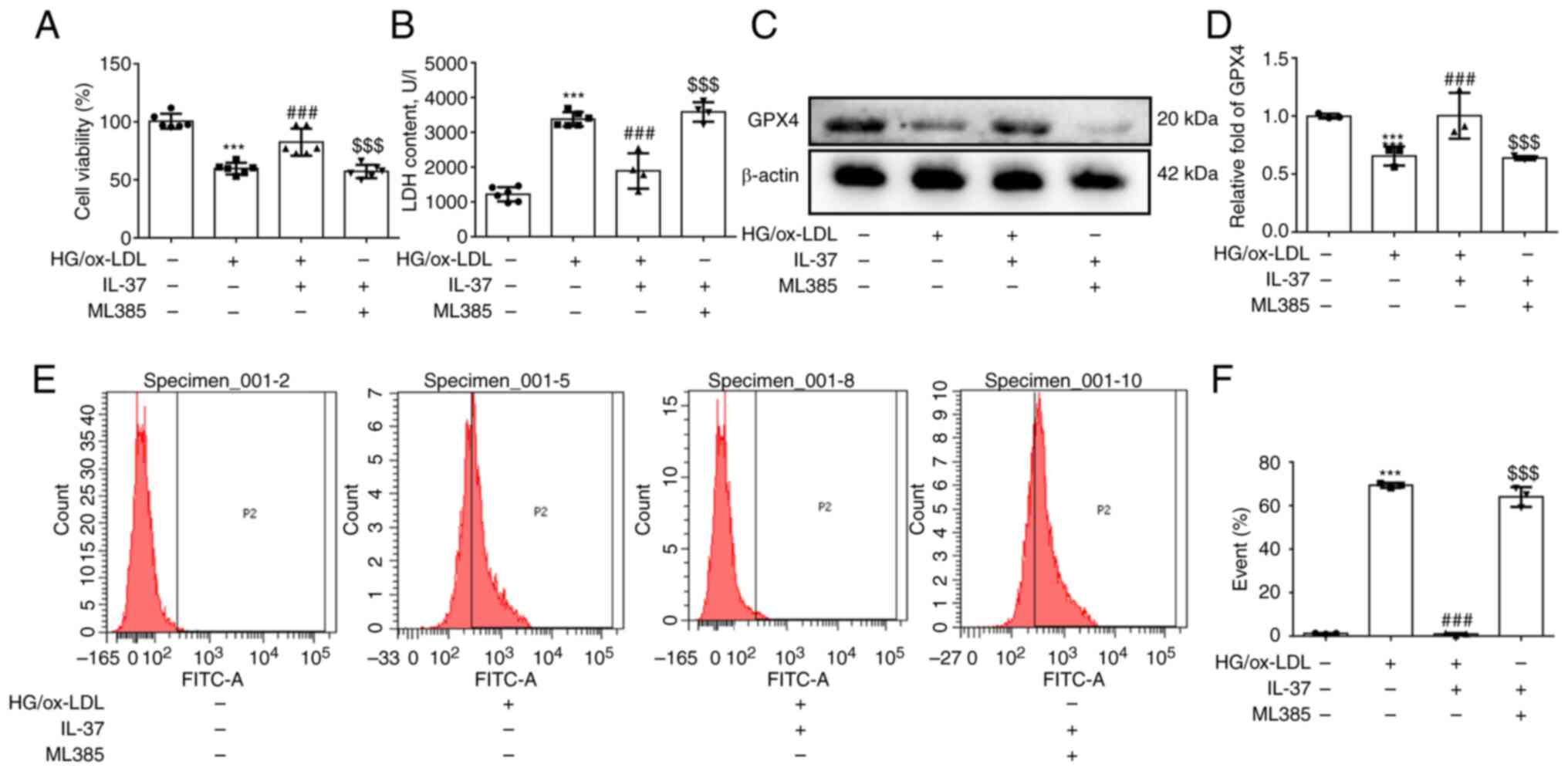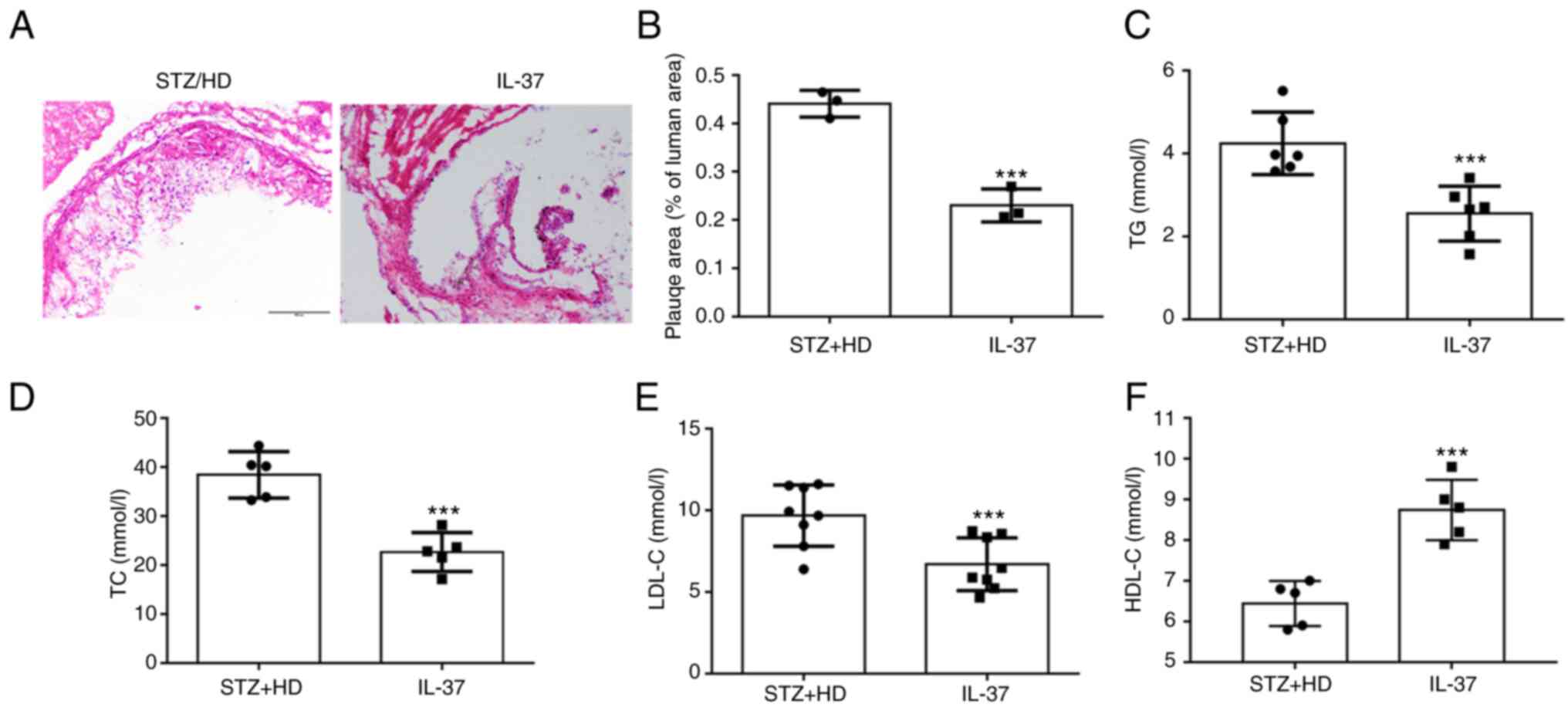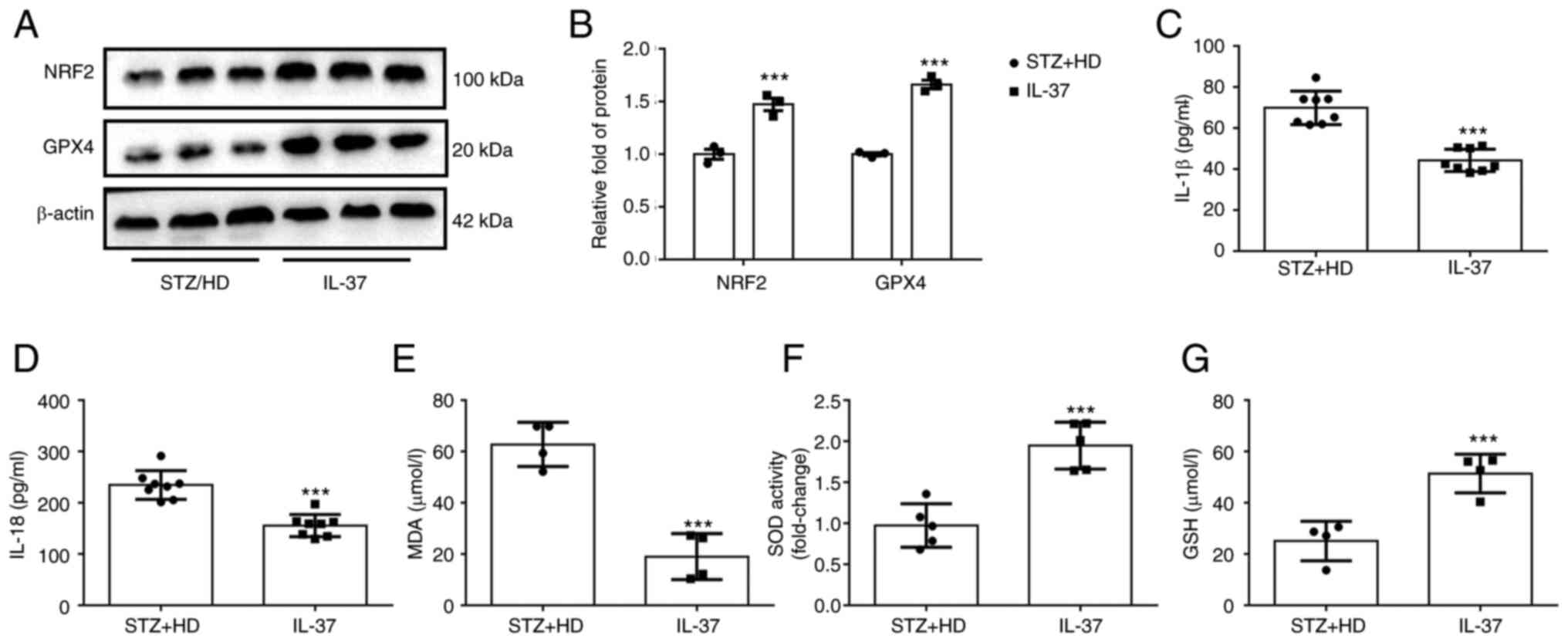|
1
|
Lopez-Jimenez F, Almahmeed W, Bays H,
Cuevas A, Di Angelantonio E, le Roux CW, Sattar N, Sun MC, Wittert
G, Pinto FJ and Wilding JPH: Obesity and cardiovascular disease:
mechanistic insights and management strategies. A joint position
paper by the world heart federation and world obesity federation.
Eur J Prev Cardiol. 29:2218–2237. 2022.PubMed/NCBI View Article : Google Scholar
|
|
2
|
Boswell L, Serés-Noriega T, Mesa A, Perea
V, Pané A, Viñals C, Blanco J, Giménez M, Vinagre I, Esmatjes E, et
al: Carotid ultrasonography as a strategy to optimize
cardiovascular risk management in type 1 diabetes: A cohort study.
Acta Diabetol. 59:1563–1574. 2022.PubMed/NCBI View Article : Google Scholar
|
|
3
|
Wang C, Liu C, Shi J, Li H, Jiang S, Zhao
P, Zhang M, Du G, Fu S, Li S, et al: Nicotine exacerbates
endothelial dysfunction and drives atherosclerosis via
extracellular vesicle-miRNA. Cardiovasc Res.
25(cvac140)2022.PubMed/NCBI View Article : Google Scholar
|
|
4
|
Everett BM, MacFadyen JG, Thuren T, Libby
P, Glynn RJ and Ridker PM: Inhibition of interleukin-1β and
reduction in atherothrombotic cardiovascular events in the cantos
trial. J Am Coll Cardiol. 76:1660–1670. 2020.PubMed/NCBI View Article : Google Scholar
|
|
5
|
Ferencik M, Mayrhofer T, Lu MT, Bittner
DO, Emami H, Puchner SB, Meyersohn NM, Ivanov AV, Adami EC, Voora
D, et al: Coronary atherosclerosis, cardiac troponin, and
interleukin-6 in patients with chest pain: The PROMISE trial
results. JACC Cardiovasc Imaging. 15:1427–1438. 2022.PubMed/NCBI View Article : Google Scholar
|
|
6
|
Andreotti F, Maggioni AP, Campeggi A,
Iervolino A, Scambia G and Massetti M: Anti-inflammatory therapy in
ischaemic heart disease: From canakinumab to colchicine. Eur Heart
J Supp. 23:E13–E18. 2021.PubMed/NCBI View Article : Google Scholar
|
|
7
|
Liberale L, Kraler S, Puspitasari YM,
Bonetti NR, Akhmedov A, Ministrini S, Montecucco F, Marx N, Lehrke
M, Hartmann NUK, et al: SGLT-2 inhibition by empagliflozin has no
effect on experimental arterial thrombosis in a murine model of
low-grade inflammation. Cardiovasc Res. 22(cvac126)2022.PubMed/NCBI View Article : Google Scholar
|
|
8
|
Li H, Shen C, Chen B, Du J, Peng B, Wang
W, Chi F, Dong X, Huang Z and Yang C: Interleukin-37 is increased
in peripheral blood mononuclear cells of coronary heart disease
patients and inhibits the inflammatory reaction. Mol Med Rep.
21:151–160. 2020.PubMed/NCBI View Article : Google Scholar
|
|
9
|
Law CC, Puranik R, Fan J, Fei J, Hambly BD
and Bao S: Clinical implications of IL-32, IL-34 and IL-37 in
atherosclerosis: Speculative role in cardiovascular manifestations
of COVID-19. Front Cardiovasc Med. 8(630767)2021.PubMed/NCBI View Article : Google Scholar
|
|
10
|
Zhang F, Zhu T, Li H, He Y, Zhang Y, Huang
N, Zhang G, Li Y, Chang D and Li X: Plasma Interleukin-37 is
elevated in acute ischemic stroke patients and probably associated
with 3-month functional prognosis. Clin Interv Aging. 15:1285–1294.
2020.PubMed/NCBI View Article : Google Scholar
|
|
11
|
Zhu R, Zhang F, Pan C, Yu K, Zhong Y and
Zeng Q: Role of IL-37- and IL-37-treated dendritic cells in acute
coronary syndrome. Oxid Med Cell Long. 2021(6454177)2021.PubMed/NCBI View Article : Google Scholar
|
|
12
|
Rafiei A, Ahmadi R, Kazemian S,
Rahimzadeh-Fallah T, Mohammad-Rezaei M, Azadegan-Dehkordi F, Sanami
S, Mirzaei Y, Aghaei F and Bagheri N: Serum levels of IL-37 and
correlation with inflammatory cytokines and clinical outcomes in
patients with coronary artery disease. J Invest Med. 70:1720–1727.
2022.PubMed/NCBI View Article : Google Scholar
|
|
13
|
Liu K, Tang Q, Zhu X and Yang X: IL-37
increased in patients with acute coronary syndrome and associated
with a worse clinical outcome after ST-segment elevation acute
myocardial infarction. Clin Chim Acta. 468:140–144. 2017.PubMed/NCBI View Article : Google Scholar
|
|
14
|
Liu J, Lin J, He S, Wu C, Wang B, Liu J,
Duan Y, Liu T, Shan S, Yang K, et al: Transgenic overexpression of
IL-37 protects against atherosclerosis and strengthens plaque
stability. Cell Physiol Biochem. 45:1034–1050. 2018.PubMed/NCBI View Article : Google Scholar
|
|
15
|
Ji Q, Meng K, Yu K, Huang S, Huang Y, Min
X, Zhong Y, Wu B, Liu Y, Nie S, et al: Exogenous interleukin 37
ameliorates atherosclerosis via inducing the Treg response in
ApoE-deficient mice. Sci Rep. 7(3310)2017.PubMed/NCBI View Article : Google Scholar
|
|
16
|
Chai M, Ji Q, Zhang H, Zhou Y, Yang Q,
Zhou Y, Guo G, Liu W, Han W, Yang L, et al: The protective effect
of interleukin-37 on vascular calcification and atherosclerosis in
apolipoprotein e-deficient mice with diabetes. J Interferon
Cytokine Res. 35:530–539. 2015.PubMed/NCBI View Article : Google Scholar
|
|
17
|
Lotfy H and Moaaz M and Moaaz M: The novel
role of IL-37 to enhance the anti-inflammatory response of
regulatory T cells in patients with peripheral atherosclerosis.
Vascular. 28:629–642. 2020.PubMed/NCBI View Article : Google Scholar
|
|
18
|
Yu W, Liu W, Xie D, Wang Q, Xu C, Zhao H,
Lv J, He F, Chen B, Yamamoto T, et al: High level of uric acid
promotes atherosclerosis by targeting NRF2-mediated autophagy
dysfunction and ferroptosis. Oxid Med Cell Longev.
2022(9304383)2022.PubMed/NCBI View Article : Google Scholar
|
|
19
|
Ouyang S, You J, Zhi C, Li P, Lin X, Tan
X, Ma W, Li L and Xie W: Ferroptosis: The potential value target in
atherosclerosis. Cell Death Dis. 12(782)2021.PubMed/NCBI View Article : Google Scholar
|
|
20
|
Hu H, Chen Y, Jing L, Zhai C and Shen L:
The link between ferroptosis and cardiovascular diseases: A novel
target for treatment. Front Cardiovasc Med.
8(710963)2021.PubMed/NCBI View Article : Google Scholar
|
|
21
|
Yu Y, Yan Y, Niu F, Wang Y, Chen X, Su G,
Liu Y, Zhao X, Qian L, Liu P and Xiong Y: Ferroptosis: A cell death
connecting oxidative stress, inflammation and cardiovascular
diseases. Cell Death Disc. 7(193)2021.PubMed/NCBI View Article : Google Scholar
|
|
22
|
Duan JY, Lin X, Xu F, Shan SK, Guo B, Li
FXZ, Wang Y, Zheng MH, Xu QS, Lei LM, et al: Ferroptosis and its
potential role in metabolic diseases: A curse or revitalization?
Front Cell Dev Biol. 9(701788)2021.PubMed/NCBI View Article : Google Scholar
|
|
23
|
Zhou Y, Zhou H, Hua L, Hou C, Jia Q, Chen
J, Zhang S, Wang Y, He S and Jia E: Verification of ferroptosis and
pyroptosis and identification of PTGS2 as the hub gene in human
coronary artery atherosclerosis. Free Radical Biol Med. 171:55–68.
2021.PubMed/NCBI View Article : Google Scholar
|
|
24
|
Wang G, Han B, Zhang R, Liu Q, Wang X,
Huang X, Liu D, Qiao W, Yang M, Luo X, et al: C1q/TNF-related
protein 9 attenuates atherosclerosis by inhibiting
hyperglycemia-induced endothelial cell senescence through the
AMPKα/KLF4 signaling pathway. Front Pharmacol.
12(758792)2021.PubMed/NCBI View Article : Google Scholar
|
|
25
|
Cui Z and Zhao X, Amevor FK, Du X, Wang Y,
Li D, Shu G, Tian Y and Zhao X: Therapeutic application of
quercetin in aging-related diseases: SIRT1 as a potential
mechanism. Front Immunol. 13(943321)2022.PubMed/NCBI View Article : Google Scholar
|
|
26
|
Meng Q, Xu Y, Ling X, Liu H, Ding S, Wu H,
Yan D, Fang X, Li T and Liu Q: Role of ferroptosis-related genes in
coronary atherosclerosis and identification of key genes:
Integration of bioinformatics analysis and experimental validation.
BMC Cardiovasc Dis. 22(339)2022.PubMed/NCBI View Article : Google Scholar
|
|
27
|
Guo Y, Zhang W, Zhou X, Zhao S, Wang J,
Guo Y, Liao Y, Lu H, Liu J, Cai Y, et al: Roles of ferroptosis in
cardiovascular diseases. Front Cardiovasc Med.
9(911564)2022.PubMed/NCBI View Article : Google Scholar
|
|
28
|
Wu D, Hu Q, Wang Y, Jin M, Tao Z and Wan
J: Identification of HMOX1 as a Critical Ferroptosis-Related Gene
in Atherosclerosis. Front Cardiovasc Med. 9(833642)2022.PubMed/NCBI View Article : Google Scholar
|
|
29
|
Liu H, Xiang C, Wang Z and Song Y:
Identification of potential ferroptosis-related biomarkers and
immune infiltration in human coronary artery atherosclerosis. Int J
Gen Med. 15:2979–2990. 2022.PubMed/NCBI View Article : Google Scholar
|
|
30
|
Liu W, Östberg N, Yalcinkaya M, Dou H,
Endo-Umeda K, Tang Y, Hou X, Xiao T, Fidler T, Abramowicz S, et al:
Erythroid lineage Jak2V617F expression promotes atherosclerosis
through erythrophagocytosis and macrophage ferroptosis. J Clin
Invest. 132(e155724)2022.PubMed/NCBI View Article : Google Scholar
|
|
31
|
Yang K, Song H and Yin D: PDSS2 inhibits
the ferroptosis of vascular endothelial cells in atherosclerosis by
activating Nrf2. J Cardiovasc Pharmacol. 77:767–776.
2021.PubMed/NCBI View Article : Google Scholar
|
|
32
|
Bai T, Li M, Liu Y, Qiao Z and Wang Z:
Inhibition of ferroptosis alleviates atherosclerosis through
attenuating lipid peroxidation and endothelial dysfunction in mouse
aortic endothelial cell. Free Radic Biol Med. 160:92–102.
2020.PubMed/NCBI View Article : Google Scholar
|
|
33
|
Zhang X, Zhu Y, Zhou Y and Fei B:
Interleukin 37 (IL-37) reduces high glucose-induced inflammation,
oxidative stress, and apoptosis of podocytes by inhibiting the
STAT3-Cyclophilin A (CypA) signaling pathway. Med Sci Monit.
26(e922979)2020.PubMed/NCBI View Article : Google Scholar
|
|
34
|
Ruggeri RM, Cristani M, Vicchio TM,
Alibrandi A, Giovinazzo S, Saija A, Campennì A, Trimarchi F and
Gangemi S: Increased serum interleukin-37 (IL-37) levels correlate
with oxidative stress parameters in Hashimoto's thyroiditis. J
Endocrinol Invest. 42:199–205. 2019.PubMed/NCBI View Article : Google Scholar
|
|
35
|
Chen Y, Luo X, Xu B, Bao X, Jia H and Yu
B: Oxidative stress-mediated programmed cell death: A potential
therapy target for atherosclerosis. Cardiovasc Drugs Ther 16:
10.1007/s10557-022-07414-z, 2022.
|
|
36
|
Ahmadnia Z, Ranaee M, Abandansari RM,
Bagheri N and Shirzad H: Evaluating the MicroRNA expression of
IL-35 and IL-37 in helicobacter pylori-infected patients with
gastritis and gastric ulcer. Iran J Allergy Asthma Immunol.
21:20–26. 2022.PubMed/NCBI View Article : Google Scholar
|
|
37
|
Qin H, Sun C, Zhu Y, Qin Y, Ren S, Wang Z,
Li C, Li X, Zhang B, Hao J, et al: IL-37 overexpression promotes
endometrial regenerative cell-mediated inhibition of cardiac
allograft rejection. Stem Cell Res Ther. 13(302)2022.PubMed/NCBI View Article : Google Scholar
|
|
38
|
Cong J, Wu D, Dai H, Ma Y, Liao C, Li L,
Ye L and Huang Z: Interleukin-37 exacerbates experimental colitis
in an intestinal microbiome-dependent fashion. Theranostics.
12:5204–5219. 2022.PubMed/NCBI View Article : Google Scholar
|
|
39
|
Ding Y, Wang Y, Cai Y, Pan C, Yang C, Wang
M, Qi X, Ye J, Ji Q, Yu J, et al: IL-37 expression in patients with
abdominal aortic aneurysm and its role in the necroptosis of
vascular smooth muscle cells. Oxid Med Cell Longev.
11(1806513)2022.PubMed/NCBI View Article : Google Scholar
|
|
40
|
Liu T, Liu J, Lin Y, Que B, Chang C, Zhang
J, Liang Z, Gao X, Liu S, Liu L, et al: IL-37 inhibits the
maturation of dendritic cells through the IL-1R8-TLR4-NF-κB
pathway. Biochim Biophys Acta Mol Cell Biol Lipids. 1864:1338–1349.
2019.PubMed/NCBI View Article : Google Scholar
|
|
41
|
Huang N, Liu K, Liu J, Gao X, Zeng Z,
Zhang Y and Chen J: Interleukin-37 alleviates airway inflammation
and remodeling in asthma via inhibiting the activation of NF-κB and
STAT3 signalings. Int Immunopharmacol. 55:198–204. 2018.PubMed/NCBI View Article : Google Scholar
|
|
42
|
Xie M, Tang Q, Nie J, Zhang C, Zhou X, Yu
S, Sun J, Cheng X, Dong N, Hu Y and Chen L: BMAL1-downregulation
aggravates porphyromonas gingivalis-induced atherosclerosis by
encouraging oxidative stress. Circ Res. 126:e15–e29.
2020.PubMed/NCBI View Article : Google Scholar
|
|
43
|
Wang Z, Liu B, Zhu J, Wang D and Wang Y:
Nicotine-mediated autophagy of vascular smooth muscle cell
accelerates atherosclerosis via nAChRs/ROS/NF-κB signaling pathway.
Atherosclerosis. 284:1–10. 2019.PubMed/NCBI View Article : Google Scholar
|
|
44
|
Wei Z, Jing Z, Pinfang K, Chao S and
Shaohuan Q: Quercetin inhibits pyroptosis in diabetic
cardiomyopathy through the Nrf2 pathway. J Diabetes Res.
31(9723632)2022.PubMed/NCBI View Article : Google Scholar
|
|
45
|
Li MZ, Zhao Y, Dai XY, Talukder M and Li
JL: Lycopene ameliorates DEHP exposure-induced renal pyroptosis
through the Nrf2/Keap-1/NLRP3/Caspase-1 axis. J Nutr Biochem.
113(109266)2023.PubMed/NCBI View Article : Google Scholar
|
|
46
|
Dodson M, Castro-Portuguez R and Zhang DD:
NRF2 plays a critical role in mitigating lipid peroxidation and
ferroptosis. Redox Biol. 23(101107)2019.PubMed/NCBI View Article : Google Scholar
|
|
47
|
Dong H, Qiang Z, Chai D, Peng J, Xia Y, Hu
R and Jiang H: Nrf2 inhibits ferroptosis and protects against acute
lung injury due to intestinal ischemia reperfusion via regulating
SLC7A11 and HO-1. Aging. 12:12943–12959. 2020.PubMed/NCBI View Article : Google Scholar
|
|
48
|
Wang Y, Yan S, Liu X, Deng F, Wang P, Yang
L, Hu L, Huang K and He J: PRMT4 promotes ferroptosis to aggravate
doxorubicin-induced cardiomyopathy via inhibition of the Nrf2/GPX4
pathway. Cell Death Differ. 29:1982–1995. 2022.PubMed/NCBI View Article : Google Scholar
|
|
49
|
Luo X, Weng X, Bao X, Bai X, Lv Y, Zhang
S, Chen Y, Zhao C, Zeng M, Huang J, et al: A novel
anti-atherosclerotic mechanism of quercetin: Competitive binding to
KEAP1 via Arg483 to inhibit macrophage pyroptosis. Redox Biol.
57(102511)2022.PubMed/NCBI View Article : Google Scholar
|















